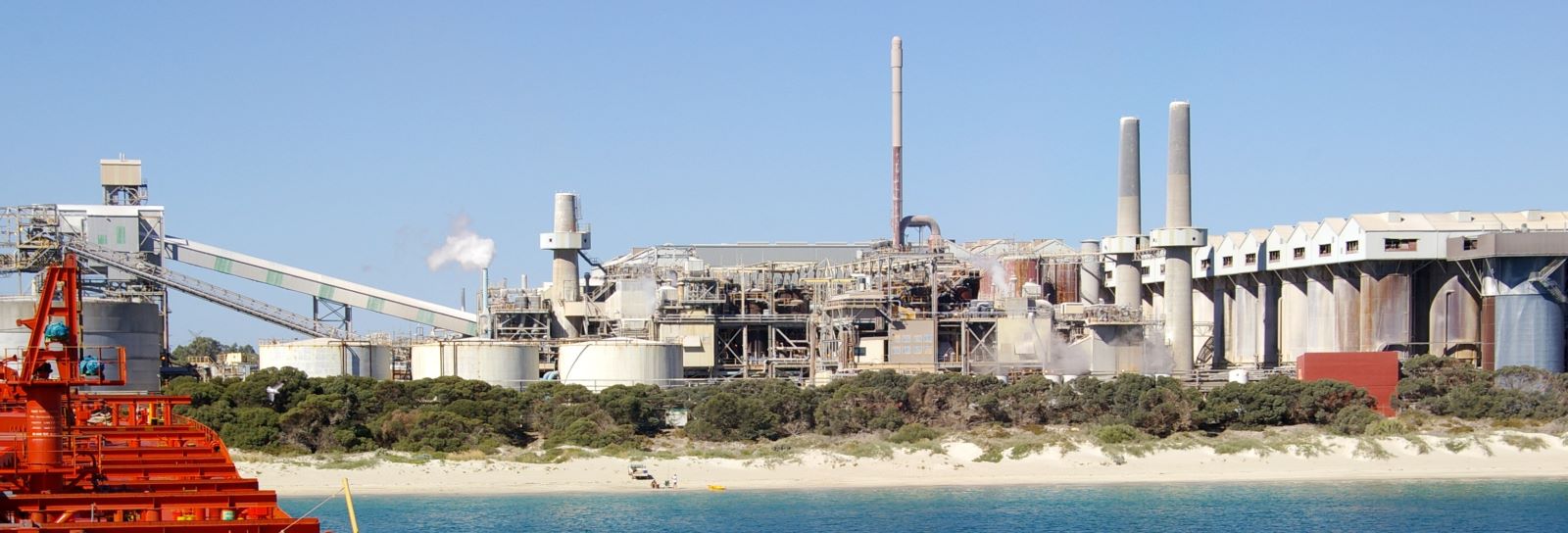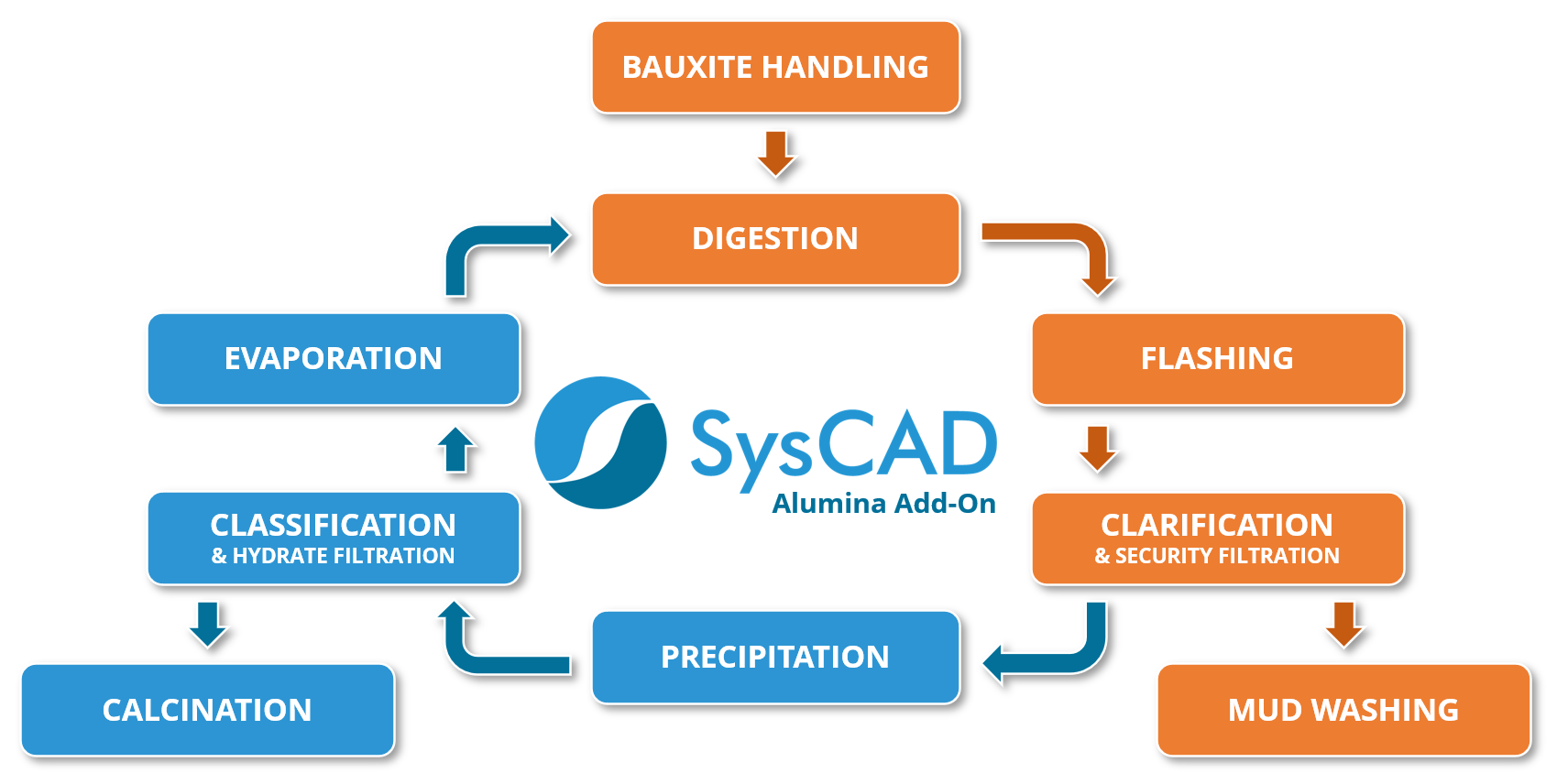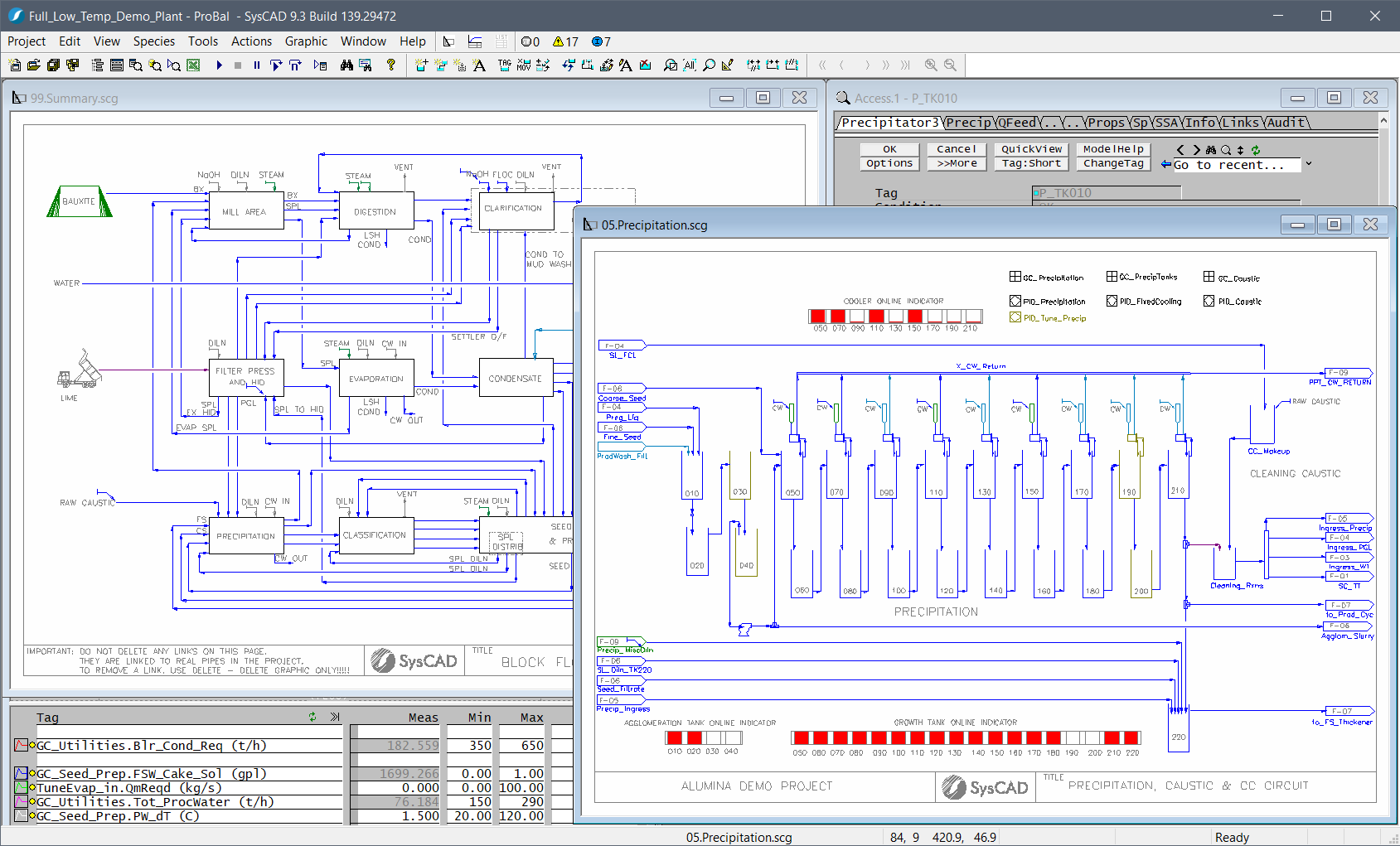Aluminium oxide (Al2O3), or alumina, is an important feedstock in a range of industries, primarily aluminium smelting, but also the production of abrasives, refractories, ceramics, glass, electronics and even cosmetics. Purity and particle size of this white powder must be carefully managed during its refining to meet strict downstream criteria.
Alumina refineries employ the Bayer process (named for its inventor Karl Josef Bayer) to produce alumina from bauxite, a red, typically surface-mined ore. Around 135 MT of alumina is produced annually worldwide, with the majority produced in China and Australia[1].
 Bayer Process Overview
Bayer Process Overview
The Bayer process is a typically divided into two areas – referred to as the red and white sides. In the red side, feed bauxite is crushed and mixed with a sodium hydroxide (NaOH) leachate, known as caustic soda or Bayer liquor. The slurry mixture is heated to 150-250°C in autoclave or tube digestion where aluminium-bearing species (e.g. gibbsite, boehmite and diaspore) are dissolved into the Bayer liquor.
(Gibbsite) Al[OH]3(s) + NaOH(aq) → NaAl[OH]4(aq)
(Boehmite / Diaspore) AlO[OH](s) + NaOH(aq) + H2O(l) → NaAl[OH]4(aq)
The resulting slurry is then flash-cooled in multiple stages, with heat recovered to digestion, before it is clarified via settling and security filtration to recover the sodium aluminate (represented as NaAl[OH]4) solution. The residual iron-rich solids, or red mud, are washed by counter-current decantation to recover caustic to the process, and then disposed of in mud ponds.
 In the white side, the supersaturated filtrate, also known as pregnant or green liquor, is passed through a series of large precipitation tanks where aluminium hydroxide (Al[OH]3 or Al2O3.3H2O), or hydrate, is crystallised out of solution.
In the white side, the supersaturated filtrate, also known as pregnant or green liquor, is passed through a series of large precipitation tanks where aluminium hydroxide (Al[OH]3 or Al2O3.3H2O), or hydrate, is crystallised out of solution.
NaAl[OH]4(aq) → Al[OH]3(s) + NaOH(aq)
The hydrate is then classified by particle size and filtered, with undersized particles returning to precipitation as seed. Product hydrate is washed and sent to calcination where it is decomposed to alumina at temperatures around 1100°C.
2Al[OH]3(s) → Al2O3(s) + 3H2O(g)
The spent liquor recovered from filtration (now low in aluminate) is concentrated via evaporation and fresh caustic addition and recycled to digestion, completing the Bayer cycle.
Process Modelling for the Real World
Of course, there are also the realities of industrial application to consider – optimising productivity, managing impurities and competing reactions, changes in bauxite mineralogy, raw material consumption, product quality and particle size, as well as water usage and energy efficiency.
A high-fidelity process model is essential to understanding and getting the best out of a process plant. SysCAD is the proven and trusted simulation platform in the alumina industry for building a comprehensive, robust and reliable refinery model for operating plants and design work[2].
 SysCAD Alumina Add-On
SysCAD Alumina Add-On
SysCAD offers an Alumina add-on license option for use in steady-state and dynamic projects. This includes a detailed industry-specific Precipitation unit model for predicting crystallisation of hydrate, as well as the Bayer Properties model for calculating and reporting equilibrium solubilities and thermodynamic properties of liquors within an alumina refinery.
The Alumina add-on seamlessly interfaces with other SysCAD units and add-ons, providing the tools required for building a detailed full-plant model. Incorporating the Particle Size Distribution (PSD) add-on enables full population balance modelling of hydrate precipitation and classification. The Energy add-on and in-built Flash Train macro allows energy balance and heater sizing for steam recovery in digestion circuits.
While the standard models use public domain relationships, custom liquor properties and unit models can be included to meet specific needs while protecting IP and other proprietary process information. A Digital Twin of your refinery, paired with structured data entry and reporting tools, provides significant commercial value for plant improvements and daily operation.
Understanding Your Process
A full plant model forms an all-inclusive knowledge base for the design and operation of your process plant, providing the tools you need for:
- Project Justification – Use a consistent basis for evaluating proposed Process Changes, Projects and Feasibility studies. Easily linked to cost control models.
- Performance Evaluation – Run any number of scenarios to evaluate sensitivity to plant changes, analyse deviations and prioritise resources to maximise return.
- Training – Give new and existing employees a deeper understanding of refinery behaviour.
- Planning – Use as a basis for Annual Planning, effects of equipment availability, turnarounds, supply interruptions, etc.
- Dynamic Modelling – Evaluate transient processes, relief systems, level control, surge and control systems testing and optimisation.
- Energy and Water – Pinch studies, water quality, model and optimise steam, power and water utilisation.
Used by owner-operators and consultants, and with extensive application in dozens of refineries worldwide, including some of the world’s largest producers, SysCAD is the proven and trusted modelling tool of choice for the alumina industry.
The alumina industry is core to our business, and the SysCAD team includes process engineers with significant experience in design and operation of alumina refineries who are available to assist with training, support, model development and project work.
Resources
- Download our Alumina Flyer
- Online Documentation: Bayer Species Properties Model, Precipitator Unit Model
- We have a range of example alumina projects available, including detailed Digestion, Evaporation and Precipitation (with and without PSD). Please contact us to arrange a Trial Download.
References
- International Aluminium Institute (2021) “Alumina Production” (Accessed 17 Aug 2021)
- J. Armstrong (2017) “The Powerful Potential of a Proper Plant Process Model” Advisian

